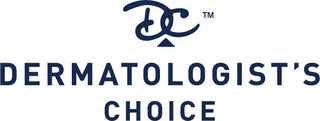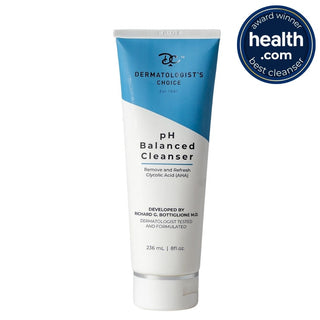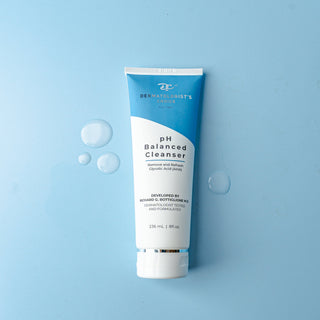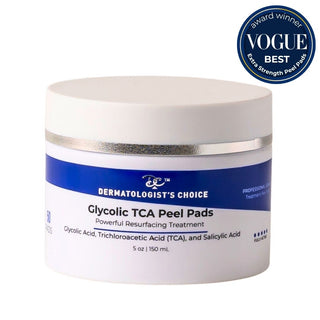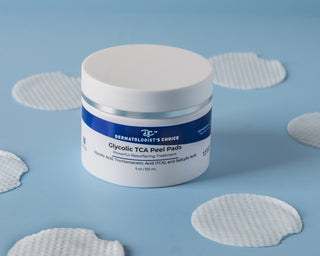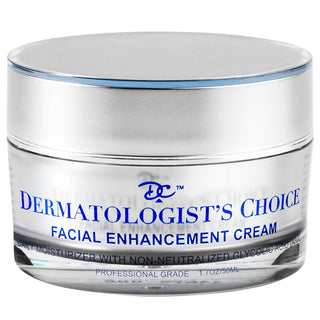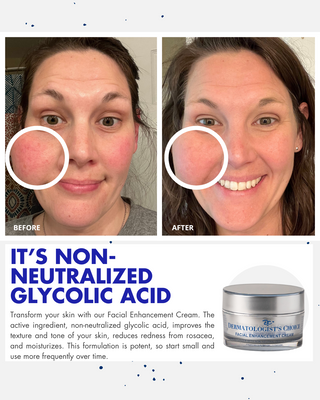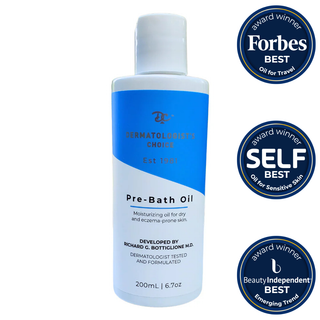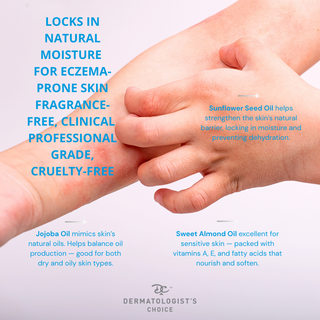
What is glycolic?
Glycolic is derived from natural sugar cane. It's an active acid traditionally used in facial chemical peels at a dermatologist office. Nowadays, glycolic acid is available in a variety of over the counter skincare products.
Something important to keep in mind when choosing a glycolic acid product is not all glycolic is made equal. Glycolic comes in many different concentrations. To ensure it's non-neutralized, you'll feel the stinging sensation or what I call the "Trustworthy Tingle", says Dr. B. When you feel the "Trustworthy Tingle" you know it's working.
What kind of products can you find glycolic in?
Nowadays, there are many products with glycolic in them. "When I started in dermatology in the 1970’s, glycolic was just used in the dermatology office and the FDA approved the prescription Retin-A. That’s when I created my flagship at-home Facial Enhancement Cream with non-neutralized glycolic acid." says Dr. B. Around the time Retin-A was approved by the FDA, ingredients such as glycolic acid were being compared to the results produced by Retin-A. This launched a conversation about over the counter substitutes to the prescription Retin-A, especially since Retin-A required a prescription, which made it less accessible.
"When gathering feedback from my patients, we found that glycolic provided similar and in most cases better results than Retin-A." says, Dr. B. "Plus, it’s less irritating than Retin-A for most skin types. Even better, glycolic doesn't need a prescription like Retin-A, so it made it more accessible for patients and customers. Still to this day glycolic is the #1 competitor to Retin-A. Glycolic is in toners, cleansers, masks, moisturizers and more. We’ve really seen glycolic take off which excites me because I’ve been using glycolic for decades in my office and in my products, Dermatologist's Choice Skincare." states Dr. B.
Who should use glycolic? Who shouldn't? Is it safe for all skin types? Can you mix it with other skincare ingredients?
Overall, glycolic acid is good for all skin types. "If you’ve never used non-neutralized glycolic before then start with a mild concentration like in the Facial Enhancement Cream daily moisturizer+.
Glycolic, compared to other acids, is best for darker skin tones, as it relates to further skin pigmentation concerns. Most products at the store and online are neutralized glycolic therefore of no value. I use *real* non-neutralized glycolic in Dermatologist's Choice." says Dr. B. If you’re using a glycolic product and don’t feel the sting or as I call the "Trustworthy Tingle" then it’s a neutralized glycolic, Dr. B. states. You must feel the "Trustworthy Tingle" that means the glycolic is working as it should. Also if you’re not feeling the "Trustworthy Tingle" with a non-neutralized glycolic then it’s likely you need to increase the concentration or use a stronger acid like TCA.
"Glycolic can be mixed for the most part with other skincare ingredients. However, it depends on the strength of the glycolic being used. For everyday use, the glycolic is nice to apply in a moisturizer, like the Ultra Anti-Aging Cream with medical-grade non-neutrlized glycolic and the Facial Enhancement Cream daily moistuizer+ with mild non-neutralized glycolic. The rich cream formulation moisturizes the skin to help minimize any redness you may experience with the active glycolic. It makes it easier for more frequent or daily application. I would recommend not using it with another exfoliating treatment or a physical exfoliant like a rough scrub. This can irritate the skin." advises Dr. B.
If you're looking for the *next-level" skincare ingredient, stronger than glycolic acid then try the new TCA acid.

What is TCA?
Derived from vinegar, TCA is the next strength in acids from glycolic. TCA is stronger and penetrates deeper into the skin compared to all the acids over the counter. The only thing stronger is a phenol peel and that can only be done in the Dermatologist office with a heart rate monitor.
What are the benefits of TCA?
Similar to glycolic acid, a TCA facial peel has many skin benefits ranging from reducing acne and aging. The benefit of using TCA instead of glycolic or salicylic acid is the boosted strength. This means, the acid will travel deeper into the skin to activate exfoliation and collagen production, resulting in faster outcomes. Expect fewer pimples and fine lines.
Any drawbacks of using TCA? Can everyone use TCA?
Not everyone should use TCA on their skin. TCA should not be used in a strength greater than 20% at home. The TCA penetrates deeper compared to other acids which may can cause a scab or redness. This side affect is alarming but not harmful. Apply moisturizer and see a dermatologist if it continues.
Additionally, a TCA peel at a concentration of 30-50% should only be used by a doctor. There are studies that site a TCA acid peel of a concentration of 100% can be used for precancerous skin spots. The Dermatologist's Choice TCA Advanced Peel Solution is a pure non-neutralized solution of about 17% which is safe for at home use.
Some clinical studies now show, using a mild concentration of TCA and glycolic acid together can produce greater improvements for acne and aging skin concerns. Glycolic acid and TCA are two powerful skincare ingredients for clearing and reducing acne, dark spots, and wrinkles. We recommend you try incorporating glycolic and TCA in your skincare routine.
